
Medtronic PLC
NYSE:MDT

Medtronic PLC
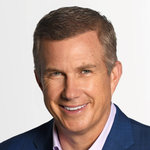


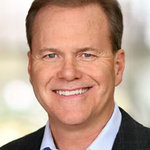

In the intricate world of medical technology, Medtronic PLC stands tall as one of the foremost innovators transforming the landscape of healthcare. Founded in 1949 as a humble medical supply repair shop in Minnesota, Medtronic has grown into a global titan, driven by the enduring mission to alleviate pain, restore health, and extend life. The company's breadth is vast, touching nearly every aspect of patient care, from advanced robotic-assisted surgery systems to sophisticated insulin pumps. At its core, Medtronic thrives on relentless research and development, continually bridging the gap between cutting-edge technology and practical medical solutions. By forging deep alliances with healthcare providers and systems around the globe, the company ensures its innovations are not only groundbreaking but also widely accessible.
The company's financial engine purrs to life primarily through the development and sale of medical devices across four major segments: Cardiac and Vascular Group, Minimally Invasive Therapies, Restorative Therapies Group, and Diabetes Group. Each unit meticulously focuses on innovating and providing solutions relevant to its field, ensuring a diversified portfolio with robust pipelines. For instance, within the Cardiac and Vascular Group, Medtronic supplies life-saving products like pacemakers and stents while also exploring breakthrough therapies such as transcatheter heart valves. By capitalizing on a global presence, the company strategically taps into both mature markets in North America and Europe and emerging markets across Asia and Latin America, thereby driving substantial revenue streams. Through this multifaceted operational framework, Medtronic not only sustains its market dominance but also reinvests in the future of medical technology, symbolizing a perpetual cycle of growth and innovation.
Earnings Calls
In Q3, Medtronic reported $8.3 billion in revenue, growing 4.1% organically. Adjusted EPS reached $1.39, up 6.9%, exceeding guidance due to improved margins. The company saw significant growth in its Cardiac Ablation Solutions (22%) and Diabetes segments (10%). For Q4, revenue and EPS growth are expected to accelerate, maintaining overall fiscal 2025 organic revenue growth guidance at 4.75%-5% and adjusted EPS between $5.44 and $5.50. Key growth drivers include new products like Affera and the MiniMed 780G, promising further market expansion as FDA approvals progress.
Management

Geoffrey S. Martha is an influential executive known for his leadership at Medtronic PLC, a global leader in medical technology. Geoffrey Martha became Chief Executive Officer of Medtronic in April 2020 and later assumed the role of Chairman of the Board in December 2020. Under his leadership, Medtronic has continued to expand its influence in the healthcare industry, focusing on innovative technologies and solutions to improve patient outcomes around the world. Prior to becoming CEO, Martha served in various leadership roles within Medtronic, including as President of the company’s Restorative Therapies Group (RTG), where he was responsible for overseeing a diverse portfolio of products and therapies. He is known for his strategic vision and a strong emphasis on operational excellence, customer engagement, and global collaboration. Before joining Medtronic, Geoffrey Martha held several roles at General Electric (GE), where he gained extensive experience in business development, commercial operations, and general management. His educational background includes a Bachelor of Science degree in Finance from Pennsylvania State University, where his leadership potential began to take shape. Under Martha's guidance, Medtronic has focused on driving growth through technological advancement, strategic acquisitions, and a commitment to addressing the world's most challenging health problems. His forward-thinking approach has reinforced Medtronic's position as a leader in medical technology and innovation.

Sean M. Salmon is a prominent executive at Medtronic PLC, a global leader in medical technology. Sean serves as the Executive Vice President and President of the Cardiovascular Portfolio at Medtronic. In his role, he oversees the company’s cardiovascular businesses, which encompass Cardiac Rhythm & Heart Failure, Coronary & Structural Heart, and Aortic, Peripheral & Venous portfolios. Sean M. Salmon joined Medtronic in 2004 and has held various leadership positions throughout his tenure. These roles have included serving as the Senior Vice President and President of the Coronary & Structural Heart division, where he was instrumental in driving growth and innovation within the business. His leadership has been characterized by a strong focus on advancing new technologies and expanding global market access for life-saving medical products. Throughout his career, Sean has been recognized for his strategic vision, operational excellence, and commitment to patient-centric healthcare solutions. His efforts contribute significantly to Medtronic's mission of alleviating pain, restoring health, and extending life for patients worldwide.

Brett A. Wall is an esteemed executive in the medical technology industry, known for his role at Medtronic PLC, one of the leading global healthcare solutions companies. As Executive Vice President and President of the Neuroscience Portfolio, Wall is responsible for leading a diverse range of the company's operations focused on neurological disorders and therapies. Brett Wall joined Medtronic in 2014 following its acquisition of Covidien, where he served in various leadership roles. At Medtronic, Wall's strategic and leadership skills have been pivotal in advancing innovative products and solutions, particularly in the fields of brain health, pain management, and spinal therapies, contributing significantly to Medtronic's mission of alleviating pain, restoring health, and extending life. His career in the medical technology industry spans over two decades, and he has gained extensive experience in business development, sales, and marketing across different geographies and healthcare segments. Wall's leadership is characterized by his commitment to strategic growth, operational excellence, and fostering a culture of innovation. His work not only focuses on advancing Medtronic's business interests but also on enhancing patient outcomes through transformative healthcare technologies.

Gregory L. Smith is a notable executive in the healthcare and medical technology industry, particularly known for his role at Medtronic PLC. As the Executive Vice President of Global Operations and Supply Chain at Medtronic, he is responsible for overseeing the company's global manufacturing, supply chain, and distribution operations. Mr. Smith brings extensive experience to his role, having worked in various leadership positions in supply chain management and operations across several industries. Before joining Medtronic, Gregory L. Smith held significant positions in other major corporations. Notably, he served as Senior Vice President of Global Operations at Boeing, where he was instrumental in enhancing the efficiency and effectiveness of the company's supply chain organization. His career is marked by a focus on operational excellence, strategic planning, and continuous improvement, which he leverages to drive innovation and efficiency in Medtronic's complex global operations. Gregory L. Smith is recognized for his leadership abilities, strategic vision, and commitment to advancing Medtronic's mission of delivering high-quality medical technologies to patients worldwide. His contributions are influential in ensuring the company's supply chain resilience and agility, crucial for meeting the demands of the healthcare industry.

Gary Corona is an experienced executive known for his strategic contributions to Medtronic PLC, a leading global healthcare technology company. With a strong background in finance and operations, Gary has played a key role in driving business growth and operational efficiency within the organization. Gary Corona earned his reputation through his adept leadership and expertise in managing complex financial structures. His role often involved overseeing financial planning, risk management, and ensuring the company's fiscal health aligns with its long-term objectives. At Medtronic, he is recognized for fostering a culture of innovation and continuous improvement, contributing to the company's mission of transforming healthcare. Throughout his career at Medtronic, Gary has been instrumental in various strategic initiatives, including mergers and acquisitions, which have helped expand the company's global footprint and technological capabilities. He is also known for his collaborative approach, working closely with other executives and teams to implement effective strategies that enhance Medtronic's competitive edge in the medical devices and healthcare sector. Moreover, Gary Corona is applauded for his commitment to corporate governance and ethical business practices, ensuring that Medtronic maintains its reputation as a trusted leader in healthcare technology. His leadership continues to inspire and guide the organization towards achieving its mission of improving lives through medical innovation.
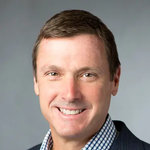
Mark Ploof is an experienced executive who has served as the Executive Vice President of Global Operations and Business Services at Medtronic PLC, a leading global healthcare technology company. In his role, Ploof is responsible for overseeing the company's global manufacturing, supply chain, and business services functions. He has played a crucial role in driving operational excellence and ensuring that Medtronic’s extensive range of medical devices and technologies are produced and distributed efficiently to meet global healthcare needs. Ploof brings a wealth of experience in operations and business management to his role, contributing significantly to Medtronic's mission to alleviate pain, restore health, and extend life. He is known for his strategic leadership and commitment to innovation in the healthcare sector.
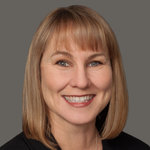
Jennifer M. Kirk is a notable financial executive and business leader associated with Medtronic PLC, a global leader in medical technology. In her role, she has held significant responsibilities aimed at advancing the company's financial strategies and operations. With her extensive experience in finance and strategic planning, Ms. Kirk has effectively contributed to Medtronic's growth and its mission of developing innovative healthcare solutions. Her expertise often encompasses financial planning and analysis, financial reporting, investor relations, and corporate strategy. Ms. Kirk's leadership is recognized for her ability to drive financial performance and lead complex financial projects. She has played a critical role in aligning financial goals with business objectives, ensuring operational efficiency and supporting sustainable growth for the company. Before her tenure at Medtronic, Jennifer M. Kirk had accrued substantial experience in finance and strategic roles within the healthcare or related industries, which equipped her with a deep understanding of the sector's intricacies. Her contributions not only strengthen Medtronic's financial standing but also enhance its capacity to innovate and provide life-transforming medical technologies to improve patient care worldwide.
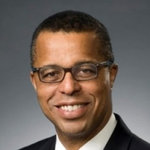
Dr. Kenneth E. Washington is the Executive Vice President and Chief Technology Officer (CTO) at Medtronic PLC. Before joining Medtronic, he held significant leadership positions at several prominent technology companies. He has extensive experience in leading advanced technology initiatives and fostering innovation. Dr. Washington previously served as the Chief Technology Officer at Ford Motor Company, where he was responsible for driving the company’s technology strategy, including advancements in vehicle connectivity, autonomous vehicle development, and artificial intelligence. His work focused on the digital evolution of the automotive industry and integrating new technologies into Ford's business model. He also held various leadership roles at Lockheed Martin and Sandia National Laboratories, where he contributed to significant advancements in science and engineering projects. Dr. Washington has a strong educational background in engineering and computer science, holding advanced degrees in the field. At Medtronic, Dr. Washington is responsible for overseeing the company's global technology strategy and its research and development efforts, ensuring the creation and integration of pioneering medical technologies to improve patient care worldwide. His role involves fostering collaboration and innovation to maintain Medtronic's leadership in the medical technology industry.

Dr. Laura Mauri, M.D., M.Sc., is a distinguished cardiologist and clinical researcher known for her significant contributions to the field of interventional cardiology. At Medtronic PLC, she serves as Senior Vice President and Chief Scientific, Medical, and Regulatory Officer. In this role, she oversees global clinical research strategies, medical affairs, and regulatory interactions, guiding Medtronic’s commitment to scientific excellence and innovation in medical technology. Before joining Medtronic, Dr. Mauri was a Professor of Medicine at Harvard Medical School and served as an interventional cardiologist at the Brigham and Women’s Hospital in Boston. She also worked with the Harvard Clinical Research Institute, where she directed numerous pivotal clinical trials that have shaped current practices in cardiology and medical device implementation. Dr. Mauri holds an M.D. from Harvard Medical School and a Master of Science in Epidemiology from the Harvard School of Public Health. Her work is highly regarded for its impact on patient care and informed medical device development. Throughout her career, she has been recognized for her leadership in academia, clinical practice, and industry, and has published extensively in peer-reviewed medical journals. Her transition to Medtronic marks a continuation of her dedication to advancing cardiovascular medicine and improving patient outcomes through innovation and collaboration.

Ryan Weispfenning is a key executive at Medtronic PLC, where he serves as the Chief Financial Officer (CFO). He has been with Medtronic for a significant portion of his career, demonstrating strong leadership and financial acumen. Weispfenning has played a crucial role in overseeing Medtronic's financial strategies and operations, ensuring the company's fiscal health and driving long-term growth. His expertise in finance and a deep understanding of the medical technology industry have been instrumental in guiding Medtronic's global financial strategy, mergers, acquisitions, and other key financial initiatives. Prior to his current role, he held various positions within Medtronic, contributing to their development and operational success.



















































 You don't have any saved screeners yet
You don't have any saved screeners yet

Good morning. I'm Ryan Weispfenning, Vice President and Head of Medtronic Investor Relations, and I appreciate that you're joining us for our fiscal '25 third quarter video earnings webcast.
Before we go inside to hear our prepared remarks, I'll share a few details about today's webcast. Joining me are Geoff Martha, Chairman and Chief Executive Officer; and Gary Corona, Interim Chief Financial Officer. Geoff and Gary will provide comments on the results of our third quarter, which ended on January 24, 2025, and our outlook for the remainder of fiscal year '25. After our prepared remarks, the executive VPs from each of our 4 segments will join us, and we'll take questions from the sell-side analysts that cover the company. Today's program should last about an hour.
Earlier this morning, we issued a press release containing our financial statements, divisional and geographic revenue summaries and non-GAAP reconciliations. We also posted an earnings presentation that provides additional details on our performance. The presentation can be accessed in our earnings press release or on our website at investorrelations.medtronic.com.
During today's program, many of the statements we make may be considered forward-looking statements, and actual results may differ materially from those projected in any forward-looking statement. Additional information concerning factors that could cause our actual results to differ is contained in our periodic reports and other filings that we make with the SEC, and we do not undertake to update any forward-looking statement. Unless we say otherwise, all comparisons are on a year-over-year basis, and revenue comparisons are made on an organic basis, which excludes the impact of foreign currency and third quarter revenue in the current prior year reported as other.
References to sequential revenue changes compared to the second quarter of fiscal '25 and are made on an as-reported basis. All share references are on a revenue and year-over-year basis and compare our third fiscal quarter to our competitors' fourth calendar quarter. Reconciliations of all non-GAAP financial measures can be found in our earnings press release or on our website at investorrelations.medtronic.com. And finally, our EPS guidance does not include any charges or gains that would be reported as non-GAAP adjustments to earnings during the fiscal year.
With that, let's head into the studio and hear about the quarter.
Hello everyone, and thanks for joining us today. We delivered another quarter of mid-single-digit revenue growth for the ninth quarter in a row. We had strong performances in several areas, starting with 22% growth in Cardiac Ablation Solutions, powered by our PFA portfolio. Leadless pacing, Neuromodulation, and Diabetes all grew double digits. And Structural Heart, excluding Congenital, and U.S. Cranial & Spinal Technologies both grew high single digits. We advanced our innovation pipeline and are opening up the largest total addressable market in med tech with Renal Denervation.
It's an exciting time as we're stacking growth drivers on top of growth drivers with groundbreaking innovation in some of the most attractive markets in med tech. We overcame a short-term U.S. distributor dynamic and delivered strong earnings power with high single-digit EPS growth coming in ahead of both consensus and the high end of our guidance range with strong improvements in both our gross margin and operating margin. And as we look ahead to our fiscal fourth quarter, we expect our revenue and EPS growth to accelerate, as we build on momentum in important growth markets and continue to drive earnings leverage. We expect our formula of delivering durable revenue growth, leveraged earnings and generating strong free cash flow to create significant value for our shareholders.
Now let's turn to the details of our Q3 business results and discuss our performance. Starting first with our Cardiovascular portfolio, which grew mid-single digits overall. The highlight was our Cardiac Ablation Solutions business. Now we forecasted strong double-digit growth this quarter and CAS delivered meaningful acceleration, growing 22%. Our pulsed field ablation products are driving rapid growth. We've hit a new gear on supply and demand for our PFA portfolio continues to accelerate. We are the only company with 2 PFA platforms, Affera and PulseSelect, which gives us flexibility.
Affera has separated itself from the pack as the most desired workhorse platform with its integrated high-density mapping as well as both PF and RF capabilities in a focal catheter. This is increasing our revenue per case as we replace competitors' mapping and RF catheters. We also have PulseSelect. And as customers use this single-shot PFA catheter, they want to use it more and more. PulseSelect gives us just a ton of flexibility to grow the market globally and compete.
Across both our Affera and PulseSelect platforms, customers appreciate their ease of use, precision, durable efficacy and now, increasingly, their differentiated safety profile. We believe the safety profile of our PFA technology is a significant point of differentiation competitively, and it is one of several factors that gives us high confidence in our outlook. Now looking ahead, we expect this rapid growth trajectory to continue. For Q4, we expect CAS to accelerate its growth rate and deliver another strong double-digit growth quarter. This will be a $1 billion business for us this fiscal year, and we have line of sight to $2 billion as our PFA portfolio expands into new accounts around the world.
Next, in Structural Heart, we grew high single digits, excluding congenital. We continue to see good adoption of our Evolut FX+ TAVR system in the U.S. and the international launch is off to a very good start. As we look ahead, we have some important upcoming data catalysts, as we continue to share long-term evidence on the benefits of our Evolut platform. Our 5-year low-risk data will be presented as a late-breaker at ACC next month and 2-year data from our SMART trial, which is a head-to-head versus our largest TAVR competitor, will be shared later this spring. Look, we're at a moment now where we've really solidified this business. With product improvements, important clinical data, and strong execution by the team, it's now in a really good spot.
Next, in cardiac pacing therapies, we grew 9%. This business has grown upper single digits for 10 quarters in a row now on the strength of our leadless pacemaker franchise and conduction system pacing technology. In April, we will mark the 10th anniversary of our first Micra leadless pacemaker receiving CE Mark. And now a decade later, our Micra franchise continues to set the standard, delivering outstanding 24% growth in Q3, and we expect this strength to continue.
Now turning to hypertension and our Symplicity blood pressure procedure. We're poised to change the standard of care for uncontrolled high blood pressure. Medicare coding and payment is now in place. And just last month, we had a pivotal development when CMS opened a national coverage analysis. This is exciting news as we will now have Medicare coverage in place within the next 8 months. We're activating new accounts across the U.S. and helping them set up Symplicity clinics and establish care pathways. So they're prepared to quickly ramp procedures when coverage is in place. And upon coverage, this will be an immediate growth driver and will become a significant source of growth for the company.
Nearly half of U.S. adults have hypertension and 1 in 4 of those with hypertension, they just don't have it under control despite the broad availability of numerous generic medications. So as we take a step back, the patient population is large. The current standard of care just isn't working. Patients want this new therapy. Physicians can easily do the procedure. And health systems support it. The opportunity here is just massive, and we're poised to be the leader in addressing this large and unmet need. And as we look at the overall cardiovascular portfolio, taking all of these growth drivers together, we expect its growth to meaningfully accelerate in the quarters ahead, starting with Q4.
Turning to our neuroscience portfolio, which also grew mid-single digits this quarter. In Cranial & Spinal Technologies, we had another strong quarter with 5% global growth, including 8% growth in the U.S., as we won another point of share. Now I've been saying for some time now that the basis of competition in the spine market is rapidly changing. And you saw yet another example last month when a major competitor decided to get out of the Spine business. We're causing this disruption. We're causing this disruption with our arsenal of differentiated enabling technology. including AI-driven pre-op planning software, imaging, robotics, navigation and powered surgical instruments. And we recently expanded into pre- and post-op imaging through our partnership with Siemens Healthineers.
Look, surgeons have to make a choice, and they're standardizing with the company that can offer them this full complement of innovative technologies. And those competitors that can't or can only offer certain pieces, well, we're seeing them either struggle or just exit the market altogether. Our differentiated best-in-class AiBLE ecosystem is attracting the best spine surgeons as well as the best reps and distributors from competitors. And as these dynamics continue to play out, and we continue to expand our innovation lead, we expect our CST business to deliver sustained above-market growth.
Next, Neuromodulation grew 13%, well above the market. And just like in Spine, our game-changing innovation and strong commercial execution is disrupting the competitive dynamics. The closed-loop sensing technology that we've developed for both pain stim and brain modulation has been a big engineering feat. We now have therapies that can be personalized at scale, which is better for patients and can lessen the load on the health care system. And it raises the bar on what it takes to compete, which is evident in our Neuromod growth.
In Pain Stim, we grew 12%, including 17% in the U.S., on the strength of our Inceptiv closed-loop spinal cord stimulator. On top of being the smallest and thinnest SCS device, Inceptiv instantly adjusts based on neural responses to keep the therapy at an optimal dose. And it has the best full body MRI conditional access on the market, which is a very important feature for patients with chronic pain.
In Brain Modulation, we grew 15%, including 26% in the U.S., driven by the adoption of our Percept DBS systems. Percept and its brain computer interface technology is transforming treatment for patients with movement disorders like Parkinson's, essential tremor, dystonia and epilepsy. Last month, we received CE Mark clearance for our BrainSense Adaptive DBS for people with Parkinson's. With this groundbreaking technology, Percept devices, through a software upgrade, can become personalized, fully closed-loop systems with real-time automatic therapy adjustments based on brain activity feedback. Now we expect this launch to drive continued above-market growth for our Brain Mod business in the quarters ahead.
Now turning to our Medical Surgical portfolio. Let's discuss our performance in Surgical. This quarter, we experienced a change in U.S. distributor buying patterns, which had a couple of hundred basis point impact on our Surgical performance. We expect this to resolve as we start fiscal '26. Apart from this distributor dynamic, our U.S. hospital customer purchasing direct from us and through distributors has been stable. And while we continue to see market and competitive pressures in our stapling franchise, we're offsetting this by winning share with our LigaSure/Advanced Energy products globally and by driving strong high single-digit growth in emerging markets.
With our Hugo soft tissue robotic platform, we're approaching some important milestones, including entering the U.S. market, expanding indications, adding features and enhancing system performance. In international markets, utilization continues to increase, and we've more than doubled Hugo procedure volume year-over-year. In the U.S., we are on track to submit for FDA approval for Hugo with urology indications by the end of next month. I also have some new information to share with you today. We have finished enrollment in our Hernia and benign GYN studies. Further, we recently received FDA approval to initiate our GYN oncology IDE study and are actively moving that forward.
We're also making progress adding features and instrumentation. We just completed our first cases using our ICG fluorescent imaging, and we expect to add our LigaSure vessel sealing technology to Hugo later this calendar year. So in total, we are confident in our path forward. Hugo will be a growth driver for our surgical business in fiscal '26 and a meaningful growth driver for Medtronic in the midterm.
Finally, in Diabetes, we had our fifth quarter in a row of double-digit growth. We printed 10% growth on top of 10% growth in the prior year. Our growth is driven by: one, the overall move of the market from stand-alone CGM with MDI to AID systems; and two, the strength of our MiniMed 780G system within the AID category. We continue to grow our 780G installed base, and we're seeing very high CGM attachment rates as well as strong growth in consumables.
In Europe, we're getting excellent user feedback on our Simplera Sync sensor, which is half the size and much easier to apply than our previous sensor. In the U.S., we've submitted Simplera Sync for FDA approval, and we're also continuing to make progress on the integration work with the Abbott-based sensor. We expect these 2 new sensors to really accelerate our U.S. growth when fully launched. Beyond sensors, we're also investing heavily in our robust diabetes technology pipeline, including next-gen durable pumps, patch pumps, smart pens and algorithms. We're also seeking expanded labeling for the 780G, including type 2 diabetes, which is a meaningful new opportunity. We expect to file this with the FDA here in the first half of the calendar year.
So across Medtronic, we continue to drive mid-single-digit growth, and you're now seeing this translate into strong earnings power. We're delivering leveraged earnings as we focus on disciplined pricing, holding our SG&A growth below sales, and realizing the benefits of our scale, including more than doubling our underlying COGS productivity.
Gary will now walk you through a deeper look at our Q3 financial performance and our outlook. Gary, over to you.
Thanks, Geoff. Our Q3 revenue of $8.3 billion grew 4.1% organic. On the bottom line, adjusted EPS was $1.39, up 6.9%. This was $0.03 above both consensus and the midpoint of our guidance. The EPS beat was driven by better-than-expected operating profit on stronger gross margins and a better-than-expected tax rate. We like the shape of the P&L this quarter with mid-single-digit organic growth on the top line, improved gross and operating margin, strong investment behind our growth drivers, resulting in leveraged earnings growth.
We continue to see breadth and diversification in our revenue growth with double-digit growth in Diabetes and mid-single-digit growth in Cardiovascular and Neuroscience offsetting Medical Surgical. We continue to see stronger overall growth in our international markets, which grew 5%, including high single-digit growth in Japan. Emerging markets grew high single digits, including high teens growth in India, mid-teens growth in Eastern Europe and low double-digit growth in Southeast Asia and the Middle East and Africa.
Moving down our P&L, our adjusted gross margin was 66.6%, up 50 basis points versus last year and ahead of our expectations. We continue to execute on our COGS efficiency programs, and that's helping to drive margin upside. We also drove the upside with our focus on better pricing and business mix. The improved gross margin translated into an operating margin that was also ahead of our expectations. Our adjusted operating margin was 26.2%, up 100 basis points versus a year ago. The organization remains extremely focused on improving our margins over time. We're also prioritizing investments in our pipeline and important product launch capabilities like hiring hundreds of mappers to support PFA growth and market development specialists in Renal Denervation to accelerate RDN growth.
At the same time, we're returning significant capital to our shareholders, primarily through our strong and growing dividend, and from time to time, opportunistic share repurchases. Regarding our portfolio, we've increased our focus on finding tuck-in acquisitions that can enhance our growth and margin profile. We're also continuing to actively evaluate our portfolio at the business, product line and geographic level, all through the lens of maximizing shareholder value.
Now turning to guidance. We're reiterating our full year revenue and EPS guidance today, and both our revenue and EPS growth will accelerate in the fourth quarter. On the top line, we continue to expect FY '25 organic revenue growth to be in the range of 4.75% to 5%. For Q4, given the strong trajectory of our growth drivers and expected acceleration in the cardiovascular portfolio, we're comfortable with current Street organic revenue growth consensus and expect to deliver our 10th quarter in a row of mid-single-digit revenue growth. Based on recent rates, FX would have an impact to fiscal '25 in the range of $275 million to $325 million, including $125 million to $175 million in the fourth quarter.
On the bottom line, we continue to expect fiscal '25 non-GAAP diluted EPS in the range of $5.44 to $5.50 and are comfortable with current full year Street consensus. Based on recent rates, our EPS guide factors in a 5-point impact from foreign currency, and we will have a significantly smaller impact than that in fiscal '26. In Q4, we expect our restored earnings power and strong operating margin expansion to continue, resulting in high single-digit adjusted EPS growth in the back half of our fiscal year, consistent to the commitment that we have been sharing all year. Further details on our guidance can be found in the guidance slide in our presentation.
Geoff, back to you.
Thank you, Gary. And I want to thank you for stepping in as CFO over the last few quarters. I know you're going to help ensure a smooth transition as we welcome Thierry, and I look forward to your continued contributions to Medtronic. Now Thierry will be joining us in a couple of weeks. And as I've heard from several of you in the investment community, it sounds like your checks are confirming what led us to hire him. He has a very strong reputation for his operational focus and ability to lead organizations to drive margin improvement, portfolio management and earnings power to create shareholder value.
Now before we go to analyst questions, I'll share a few final thoughts. Look, we've made a number of changes to the company. And the turnaround definitely hasn't been overnight. It's been building. It's been building with 9 quarters in a row of mid-single-digit growth. And now we're clearly entering a new phase with the growth drivers kicking in, and these are big growth drivers. As I said earlier, we're stacking growth drivers on top of growth drivers. We're in the moment with 780G in Diabetes, closed-loop technology in Neuromodulation and, of course, PFA in our Cardiac Ablation Solutions business. And we're about to start a massive growth driver with our Symplicity procedure in hypertension.
And there's even more to come with opportunities like Tibial Stim for Overactive Bladder, our Hugo robot, and our transcatheter mitral and tricuspid valves, among many others. And at the same time, our earnings power is now kicking in with high single-digit EPS growth this quarter and next. So look, it's a very exciting time to be here at Medtronic. And I want to close by thanking our employees who are listening today and make all of this possible. You're making a difference every day for patients around the world, innovating and advancing health care technology and improving health care access. You're inventing, developing and deploying meaningful technologies that will change standard of care and create whole new markets. I appreciate your dedication to the Medtronic mission, and I'm really looking forward to what we will collectively accomplish in the days ahead.
With that, let's move to Q&A where we're going to try to get to as many analysts as possible. So we ask that you limit yourself to one question and only, if needed, a related follow-up. If you have additional questions, you can reach out to Ryan and the Investor Relations team after the call. So with that, Brad, can you please give the instructions for asking a question?
[Operator Instructions] Lastly, please be advised that this Q&A session is being recorded. For today's session, Geoff, Gary and Ryan are joined by Que Dallara, EVP and President of Diabetes; Mike Marinaro, EVP and President of the Medical Surgical portfolio; Sean Salmon, EVP and President of the Cardiovascular Portfolio; and Brett Wall, EVP and President of the Neuroscience Portfolio. [Operator Instructions]
We'll take the first question from Patrick Wood at Morgan Stanley.
I promise I'll keep it to one. As you guys are moving into '26, fiscal '26, obviously, there's Hugo, CAS accelerating, Inceptiv doing well, Micra, et cetera. So there's a lot of moving parts. I know it's only Q3, but would it be fair to assume that the base algorithm, call it, mid-single-digit growth, and then high singles on the bottom line, that that's a fair assumption moving into fiscal '26, also given we got that as an exit rate in Q4. Is that a fair assumption?
Sure. Patrick, thanks for the question. Yes, we'll give FY '26 guidance on our Q4 call. But yes, our objective is unchanged. We're committed to doing the things that we need to do to drive profitable growth and operating leverage at Medtronic. So as Gary pointed out in the commentary, we reiterated our guidance for this fiscal year of 4.75% to 5% organic revenue growth and high single-digit realized EPS growth in the back half of the year. And as we look into the future, we think that -- we're still committed to that LRP that you outlined.
We'll take the next question from Larry Biegelsen at Wells Fargo.
I wanted to ask Sean a question on AF Solutions, which was obviously a bright spot in Q3. So Sean, talk about the drivers of the acceleration in Q4 and how you're thinking about fiscal '26. And specifically the ramp of Affera, where you are with supply, your ability to get mapping in the field and that $2 billion line of sight, how quickly can you get there?
Larry, let me take the first swing at that and then have Sean come in on some of the details. First of all, it's great to see how PFA is -- the impact it's having on patients and also increasing physician and hospital productivity with its speed and efficacy and safety profile. And we're really excited about our positioning in the market, and you're starting to see that in our last quarter's results, as you pointed out. And we consider this to be like a hyper growth driver for us, and we're really just getting started.
Back to the line of sight question, that's what I wanted to get at, the $2 billion line of sight. Here's what I'll say. First of all, the market is super strong and will continue. We see PFA as a roughly $9 billion market, growing in the high teens. And we've got strong demand for both of our platforms, PulseSelect and Affera. And this gives us a ton of flexibility as we grow the market globally. And as many of you pointed out, Affera is just -- it's getting rave reviews. I mean it's high demand. And as I've traveled the globe here in the first couple of weeks of the year, everybody seems to know that name Affera. And supply is a lot better across the board. Our suppliers are performing well, and our new factory in Galway is a game changer with an immediate impact for Affera.
And so I'd say, these are not -- like the $2 billion line of sight, they're not like forward-looking statements. This is in the moment, and we're not stopping at the $2 billion. That's not an end game. That's line of sight shorter term. When you get beyond next year, don't forget that Affera will be moving into the single-shot space as well. And so we still have a lot of confidence about the near-term and long-term opportunity here with PFA and our 2 platforms.
I don't know, Sean, do you want to -- I think Larry had a few other things on there as well. Do you want to jump in?
Yes, sure, Geoff. I think you've covered it pretty well. We are aggressively expanding both capacity within the factory and within the field. And it's important that we stay ahead of that as we add mapping in. And I think as Geoff said, we're not just seeing strong demand for Affera, its launch in the third quarter in the United States has driven a lot of growth. But we also -- we're in those hospitals, we're getting a lot of the paroxysmal cases with PulseSelect as well. So it's really a kind of dual platform, multiple-use sort of penetration to the accounts.
We also see a lot of utility for certain geographies that don't use mapping, where PulseSelect is a really favorite product, too, because of its precision and its proven and durable efficacy and, increasingly, that safety profile, which is really a distinguishing feature for it. So as we step into next year, I think we got lots of growth to look ahead to as we expand out that footprint in the field and have capacity really well ahead of the demand, and we push it forward. So things are going to continue to rock for us within the pulsed field ablation world, and the team is really excited about it and physicians really appreciate the technology we're bringing.
The next question comes from Robbie Marcus at JPMorgan.
There's talk of all these big growth drivers with pulsed field ablation and Hugo, especially now with the trials enrolling and submission coming at the end of the month and also Renal Denervation. How do you think about balancing the spend of investing in these programs to make sure they're successful versus being able to continue driving margin expansion like we saw in this quarter?
Yes. Well, thanks for the question, Robbie. Look, I'd say we do have a lot of, I'll call them, growth drivers that come with investment opportunities. And the goal here is to be able to do both, right, is to be able to invest in these things and growth as well as hit our financial algorithm that Patrick asked about. And the gross margin improvement is a key piece of that, right? So over the last couple of quarters and even years, we've done our -- we've really, I think, gotten better at being able to grow the sales number that mid-single digit without growing the G&A -- the SG&A even nearly at the same pace. And that will continue.
And then adding the gross margin improvement to that gives us a lot more flexibility. And then finally, I would add tuck-in M&A. I think tuck-in M&A, we've got a strong balance sheet and tuck-in M&A gives us an opportunity to -- because the tuck-ins we're doing are just another form of R&D for the most part. And so that's how we do it. But a key for us is stepping up the tuck-in M&A, I'd say, and continuing the margin improvement. Gary, anything to add to that?
No, you hit it, Geoff. It's been our focus. We grew gross margin in the first half of the year on a constant currency basis, and we'll grow gross margin on an AFX basis in the second half of the year. And that's really what's going to be key to us being able to deliver the high single-digit EPS while we fund the growth drivers like investing in mappers, as I talked about in my prepared remarks.
The goal here, we've got some of these growth drivers, we've got to continue to make the investment. We want to play offense at this point in time.
The next question comes from Vijay Kumar at Evercore ISI.
Geoff, I think I had a 2-parter. When it comes to large companies, this is exactly what we wanted to see, diversified portfolio. We have some moving parts, but you still have the ability to manage the P&L and drive earnings, right? I feel like that's what we got here. When I look at the print here, U.S. Surgical, I think you called out a distributor timing impact. But what gives you the confidence this is not a share loss? And I think related to that P&L management, right, this gross margin stood out. Any one-timers in gross margins? Maybe talk about what drove the sequential step-up in gross margins in sustainability?
Sure. Well, thanks for the question. I'd say on the Surgical question, first, like I said in the commentary, the performance there was driven by a couple of our larger distributors stepping down their carried inventory levels of Medtronic inventory below their normal levers. Like I said on the call, this dynamic cost us about a couple of hundred basis points in Q3 growth. However, we do expect these dynamics to resolve as we enter Q1 when these distributors reach their target inventory levels. So when they get to those inventory levels that they communicated that they want to get to, to us, that's when this resolves and that's going to be as we enter Q1.
Now your question about share. We do have the ability to see through, we track this very closely, the end customer purchases. And one, we know they're stable; and two, we're not losing share. We continue, I think, to outperform slightly in the non-robotic space. Robotics in the U.S., obviously, is a headwind for us. So that's what I'd say to that one. And on the second one, I'll let Gary handle the gross margin question.
Thanks. And Vijay, thanks for your comments on balancing the puts and takes. As Geoff and I have talked about, we're really focused on delivering the earnings power. On gross margin specifically, we were pleased with the performance, 140 bps sequentially and 50 bps year-over-year on an AFX basis. The drivers, as Geoff talked about, continuing our COGS efficiency programs and really improving our operating efficiencies. We continue to be disciplined on pricing. And we did see some, actually in the gross margin line, foreign exchange favorability. I will say our second half gross margins will be up both on a constant currency and on an AFX basis, and we're really focused on it to not only drive the earnings power, but also to fund the investment, as Geoff talked about.
Yes. I mean I think that, like Gary said, the focus on the margins in every aspect of them, whether it be pricing, mix and of course, our cost-down programs, and those are having an impact in improving the margin. Getting back to Surgery, your question on share loss, I'd also say the business is doing well outside the U.S. at mid-single-digit growth. In emerging markets, we're seeing high single-digit growth. And then we're gaining share worldwide in areas like LigaSure and barbed sutures.
And then really what we want to do is get this business back to our corporate average, right? And that, as we look to FY '26, Hugo accelerates and becomes more of a growth driver for Surgical -- at the Surgical level. And as I mentioned in the commentary, Hugo is approaching some important milestones, and some of you have asked about these. And we're seeing solid progress on Hugo as measured by, I'd say, a comprehensive set of leading indicators. And it's these indicators that give us confidence. And maybe Mike Marinaro is in the best position to discuss these. Maybe I'll ask Mike to comment on these leading indicators for Hugo.
Yes. Thanks, Geoff, and thanks, Vijay, for the question. I think you've commented on some of these in your commentary, Geoff. But when we look at a complex program like Hugo, there's many elements that come together really to make it go, the system, the indications, instruments, of course, and getting into markets around the world. So we're now in over 25 markets around the world. Our procedure volume has more than doubled on a year-on-year basis. We're seeing utilization improve in current programs, which is a really important measure of success.
We track external publications, independent publications. There's been over 170 now at this point. So looking at the performance and utility of Hugo compared to the market leader. And what we see is that the commentary is broadly comparable, both in procedure times and functionality. So that's obviously a great external measure. We're making progress with our advanced capabilities. So we just completed our first ICG cases. LigaSure is obviously critical for Hugo. We expect to introduce that this year.
And then I think as Geoff mentioned in the commentary, we are on track to submit to the FDA for the urology indication at the end of next month. But as importantly, we're increasing our capability and driving the clinical evidence to support multiple indications in the U.S., having now completed hernia, benign gynecology, moving into gyn-onc here near term, which will then give us a cadence of indication opportunity to really have a fully featured product. So we take all of these things together, and you can see that it comes together and really drives the progress and optimism that we see as we're preparing to enter the U.S. market in FY '26.
We'll take the next question from Travis Steed at Bank of America.
I just wanted to push a little more on the Surgical side since it was kind of the one area that was a little bit different this quarter. I guess curious, why do you think the distributors destocked in the quarter? And why didn't you have kind of visibility in that ahead of time? And did you talk to the distributors? And did they say they would kind of return back to normal buying patterns in the quarter? I guess I'm just looking at this U.S. Surgery business. It's kind of been below Medtronic corporate average for about 5 quarters now, and there's been a lot of onetime things going on there. But I just want to kind of get investors’ confidence that this business can return back to growth next year? And is Hugo required, do you think, to get this business back to kind of mid-single-digit plus growth?
Yes. Okay. Travis, thanks for the question. As I had mentioned that this distributor issue that came up, it is temporary. It came in late in the quarter for us. And the distributors' reasons for bringing down their inventory, it's really to hit their goals. I'm not going to get into that. It's specific distributors and 2 of our larger ones. But that's their own goals. But as they get down to very specific inventory levels, that's when they'll be getting back to that normal trajectory. And like I said, that will happen as we enter Q1.
Now getting back to your point on the U.S. Surgical business, just taking a step back, the competitive issues facing our -- really, it's our stapling franchise over the last, call it, several quarters, as you've outlined, has brought the surgical growth levels down below the corporate average, as you pointed out. However, these pressures aren't new. And we're committed to returning the Surgical business to a stronger growth profile more in line with the corporate average. Mike walked you through our confidence in Robotics, and that's becoming a growth driver for the Surgical business itself in FY '26. And then beyond, it will become more of a -- in the midterm, a more growth driver at the Medtronic level at the $33 billion revenue level, you'll start to feel it.
In addition, we just got to maintain our strength in emerging markets where we're seeing the high single-digit growth. We need to continue to take share with LigaSure and barbed sutures on a worldwide basis, and I already talked about Hugo. So we have confidence in this because of the progress -- we feel we have confidence in this because of the progress we're making and how we're holding in other parts of the business. Mike, anything you want to add to that?
I think you've outlined it really well, Geoff. We are focused on our areas of growth that you highlighted, where we can gain share. This dynamic that we experienced this quarter was a bit unique, and it did come in late, although we have had conversations. We understand what the objectives are. We expect that when we hit those levels that we then see more normalized performance moving forward. So that really should address that issue. And then we get it back into our normal sort of rhythm focusing on the areas of growth that you described.
And then the guidance that we've given implies both the top and bottom line acceleration in Q4, even though we still have this distributor issue in Q4. And this is driven largely by acceleration of CV because Cardiovascular will accelerate and drive upside going forward. So when you think about Cardiovascular, we've had about 10 quarters in a row of mid-single-digit growth without much, if any, contribution from CAS or RDN. And let's refer to this as like the CV base business without CAS and RDN. And we'll continue to see this performance in the base business, driven by above-market performance in CRM, think leadless, conduction system pacing, EV-ICD.
And again, as I mentioned in the commentary, Structural Heart is in a great place and with strong evidence and that we'll keep building upon and product improvements that have come out in Evolut FX+ and I think just better commercial execution against the main competitor there from our team. I mentioned Cardiac Surgery, where we've revamped the product lineup, refreshed it over the last 2 years, and now it's been growing at high single digits. So you have all that in this base business that we don't see changing going forward, that mid-single-digit growth that we've seen over the last 10 quarters. And now you add the contributions from CAS and RDN on top of that, that you'll accelerate in Q4. And then as you enter into FY '26, you pick up the RDN piece as well and CAS keeps going.
We'll take the next question from Matt Miksic at Barclays.
So I wanted to just follow up on the other sort of soft spot in the quarter here around Peripheral Vascular that went from like a mid-single-digit growth in previous quarters to this low-single-digit decline. And I guess similar to the questions around distributor stocking is timing for turning that around confidence that, that can kind of turn the corner here since that really was the only business in CV that pulled down a little bit on a pretty solid mid-single-digit growth portfolio average.
Yes. Just Matt, you broke up a second there. I think you were talking about Peripheral Vascular. But yes, that is really a China issue. That is a China VBP issue that we're dealing with there that will work its way out. China, we've worked through most of the VBP, but there is still a little bit left to go, and it's created, I'd say, a little bit of volatility within the China line, and we've been able to overall do well there and actually do well profitably as well. But you see volatility that shows up in an individual business, and that's what happened for Peripheral Vascular this quarter. Anything to add to that, Gary or Sean, in terms of...
All right.
The next question comes from Josh Jennings at TD Cowen.
I was hoping you guys have talked about the massive global opportunity for the Renal Denervation franchise, and you laid out the path to unlocking the U.S. I was hoping to just get an update on the international opportunity, just where the business stands. Should we be thinking or could we be seeing some coverage and announcements in different countries? And then what do you expect, means what needs to happen in order for that international ramp for the Spyral unit going forward?
Sure. Thanks for the question, Josh. I'm going to let Sean answer the global question, the international question. But before, I just got a comment on, look, RDN, it's been a journey for us. As we sit here today, we're really excited. I mean the NCA is a huge milestone. And now we're going to be going after the -- basically the -- we're excited to change the standard of care in the largest chronic disease issue in health care with hypertension, the #1 contributor to death.
And this NCA, going to an NCD, we have a lot of confidence. We've gone back and looked over the last decade plus, we haven't seen an example where an NCA doesn't convert to an NCD. And we've got -- and the FDA or the CMS has laid out really definitive timing for the announcement in July and then take effect in October. So that really unlocks this huge opportunity in the U.S. And we think it does create a halo effect not just in the U.S. for commercial players, but globally. And then that's where your question comes in. So Sean, do you want to talk about the international progress and opportunity?
Yes, sure. Thanks, Josh. Appreciate the question. So like a lot of these reimbursement efforts, you have to do them country by country by meeting the individual expectations. And across Europe, most of that's a health technology assessment. And we've published numerous cost-effectiveness studies, which would support those analyses. The other thing that really drives payment decision at the country level is going to be the guidelines that get published. All those society statements have been very supportive to the European guidelines and ESC guidelines. So we're seeing country-by-country increases, including France, which has established reimbursement.
And then outside the United States and Europe, we've recently gotten approval within China, and then we have to go to the hospital listing process there. So we'll start in big cities and go beyond that. And of course, the only outstanding country for approval is Japan, and we're working on that to getting regulatory approval. And then typically, it's 6 months from the time of approval to when you get reimbursement for those products. So we're making a good push in every country where we can. But make no mistake about it, the U.S. is going to be the dominant growth driver for Renal Denervation given both the prevalence of the disease and the setup we have for both Medicare payment as well as the building commercial insurers' interest in covering this device as well.
The next question comes from David Rescott at Baird.
I wanted to ask on FX, Geoff. I think you called out the opportunity recently to more actively manage the FX risk exposure. Maybe could you help us understand exactly how you can do that, maybe the kind of level or magnitude of control these factors ultimately could have on FX? And then over what period you think you could start to mitigate some of that FX risk?
So thanks for the question, David. I mean I'd say on that, on your last point, the actions we've taken have already started to mitigate this, and it's been something we've been working on now for quite a while, a couple of quarters, and you're starting to see effects. But I'm going to have Gary outline exactly what we're doing and the opportunity here.
Yes. David, I'll start with your second question, and then I'll come back to what we're doing about it. And I think your second question was just what are we seeing. And what we're seeing this year has been very consistent. So there's no new news for FY '25. And then as I talked about in my prepared comments, as we have visibility into '26, we'll have meaningfully less of a headwind on the FX line than we did in FY '25.
Thanks for recognizing what we've been talking about. And as Geoff said, we're making progress by really taking a greater level of ownership and proactive measures. We're changing our incentive structure to U.S. dollars versus local currency for many of our emerging markets. And it drives commercial changes like dynamic pricing. That might mean updating our pricing as often as every month. And this was a big change for us. And as Geoff mentioned, we're seeing the progress. That activity will help our gross margins. And as we talked about earlier, that's the key to driving the earnings power as well as funding the investments in growth while we deliver against our financial commitments. So thanks for the question. I appreciate it, and please know it's a key area of focus for us.
The only other thing I'd say to that is, and Gary's team has done a lot of work on this, as well as our global operations and supply team, is creating natural hedges in our supply chain as well with our suppliers and how we look at supply chain. So it's a comprehensive view -- a comprehensive approach, if you will, that is starting to pay off.
Thank you, David. Well, I think we've got time for 2 more questions, Brad.
The next question comes from Shagun Singh at RBC Capital Markets.
Geoff, I was very intrigued by your comments around stacking growth drivers on top of growth drivers. And I was wondering if you could put maybe a finer point. Some of the drivers here could be pretty meaningful. So anything you can share here in terms of magnitude of the incremental growth contribution in year 1 versus year 5? Anything there?
And then can you talk a little bit about the specific timing here? So the line of sight to $2 billion, when do you think you can get there? You said that's a first stop. So where does it go over time? For Hugo, you mentioned growth contributor in FY 2026, as well as meaningful growth in the medium term. So can you define that better? And then just on RDN, you said it will be an immediate growth driver upon coverage. So just any color on the near-term appetite and what that looks like?
That was a loaded question there, Shagun. Thanks for the questions. I mean I'd say, the way we're looking at the growth drivers is like, look, these are -- we define growth drivers as areas where we have high confidence in a large -- a fast-growing market that's also a large market and then confidence in our position in that market. So 3 that are here now. Obviously, Diabetes, we've talked a lot about. We've had several quarters in a row of double-digit growth. And we still have -- on the basis of 780G, we still haven't gotten our Simplera Sync. That's in front of the FDA for the U.S. And we've got a pipeline here of other things like patch. We talked about expanded indications for 780G like type 2, which are meaningful. So there's a lot in Diabetes to come, but it's already been growing double digits here for a number of quarters.
We talked a lot about PFA and CAS and kind of how we're just moving forward here and that line of sight comment. I answered that earlier that not only put a specific time frame around that $2 billion, but it's in the near term as we've unlocked supply here. I came to find out that there was a lot -- people had looked at -- and this is based on both of our platforms. I know there's a lot of questions around Affera and there was -- I think we've kind of cracked the code, if you will, on supply there. And this new factory in Galway, Ireland, has really been a game changer for us.
And of course, Neuromod, because I think we're one of the few that's growing in the teens here. I think we're the only one. And this is maybe not quite as big as some of these other markets, but it's still big, multibillion-dollar market. And we've got a fundamental change in technology here with sensing that whether it be SC, Pain Stim, or DBS, the sensing is very differentiated, and we feel the basis of competition going forward. And that's why we have confidence in this growth profile going forward. And the story is that we're getting on this -- on the ability to -- what sensing means and particularly when you get to things like Adaptive DBS, where you can close the loop, the impact on the patient and the impact on the health care system where it's automatically programmed is massive. And so we see that moving forward.
Those are all here right now and contributing. And then you get into FY '26, Hugo starts to be a meaningful growth driver for our Surgical business like we talked about. RDN kicks in. We haven't quantified that. You have to wait for the Q4 call in terms of the short-term impact on RDN, but obviously, the NCD really unlocks that. And the patients that we're treating right now, the efficacy is just better than even we expected and sure physicians are giving us great feedback.
But then you get out beyond that, and all these growth drivers are going to keep going, but then you add Tibial on that. And Tibial is another one that I think we're one of the only ones talking about it for overactive bladder. We think this will double the size of that business over the next couple of years once we launch it. I mean there's such a pent-up demand for this. And it takes this from a -- I call it Tibial Stimulation for overactive bladder. It takes it from more of a medical device to not quite a wearable, but you're getting close to a wearable when you're just going under the skin on the ankle, but above the fascia with a tiny device that -- and I'm not going to give away all the -- it's a very compelling story that is going to open up that market.
So you can see we've got this flywheel going. Robbie's question earlier about the investments to keep it going. We feel good about that, especially with the gross margin improvements and some dry powder we have in M&A to augment that. But that's about the extent of the color I can give at this point. And I probably left 1 or 2 out, but those are the ones that are on the top of my mind.
Okay. Thanks, Shagun. We've got time for one more question, Brad.
Our final question comes from Pito Chickering at Deutsche Bank.
I'll make this one quick at top of the hour. A follow-up question just to Travis' on Medical Surgical. Is there any risk that this is from distributors that are pushing their own privately manufactured products and displacing Medtronic products? In general, as you look at your portfolio in that division, is that a potential risk for the future?
No. I'll let Mike answer that question, but I think the short answer is no. But Mike, why don't you tell them why?
Yes. We've been given no evidence of that at all. We have very active conversations and specific agreements with them around the products that we sell and that they distribute for us. And we're very clear, Pito, on just how that all comes together in the marketplace. And so there's no indication that there's any pressure at all from that front just based on our work together with them.
The other thing I'd augment that answer is that, look, we go through distributors because there's a lot of products here in the Surgical business, right? But the contracting we do, a lot of that's directly between us and the hospital. So we have very tight contracts that have been tested over time, like if we have a supply shortage and then a competitor takes up that and we get it back, we get that supply back. We're right back to where we were based on the contracts. These contracts with the hospitals are pretty tight as well. So you have the dynamic Mike said that these distributors, we have tight contracts with them, but then we have tight contracts that we enter directly with the end user hospitals. So that we don't -- it's the first time I got that question, but that's not something that we're concerned about in the business.
Okay. Thanks, Pito. Geoff, please go ahead with your final remarks.
Okay. Well, thanks to all the analysts for the questions and to all that you've joined us today. We appreciate your support and continued interest in Medtronic, and we hope you'll join us for our Q4 earnings broadcast, which we anticipate we're going to be holding on Wednesday, May 21, where we'll update you on how we finished the fiscal year, including all of our growth drivers and margin expansion and how that's all tracking and give you guidance, of course, for FY '26. So with that, thanks for spending time with us today, and have a great rest of your day.